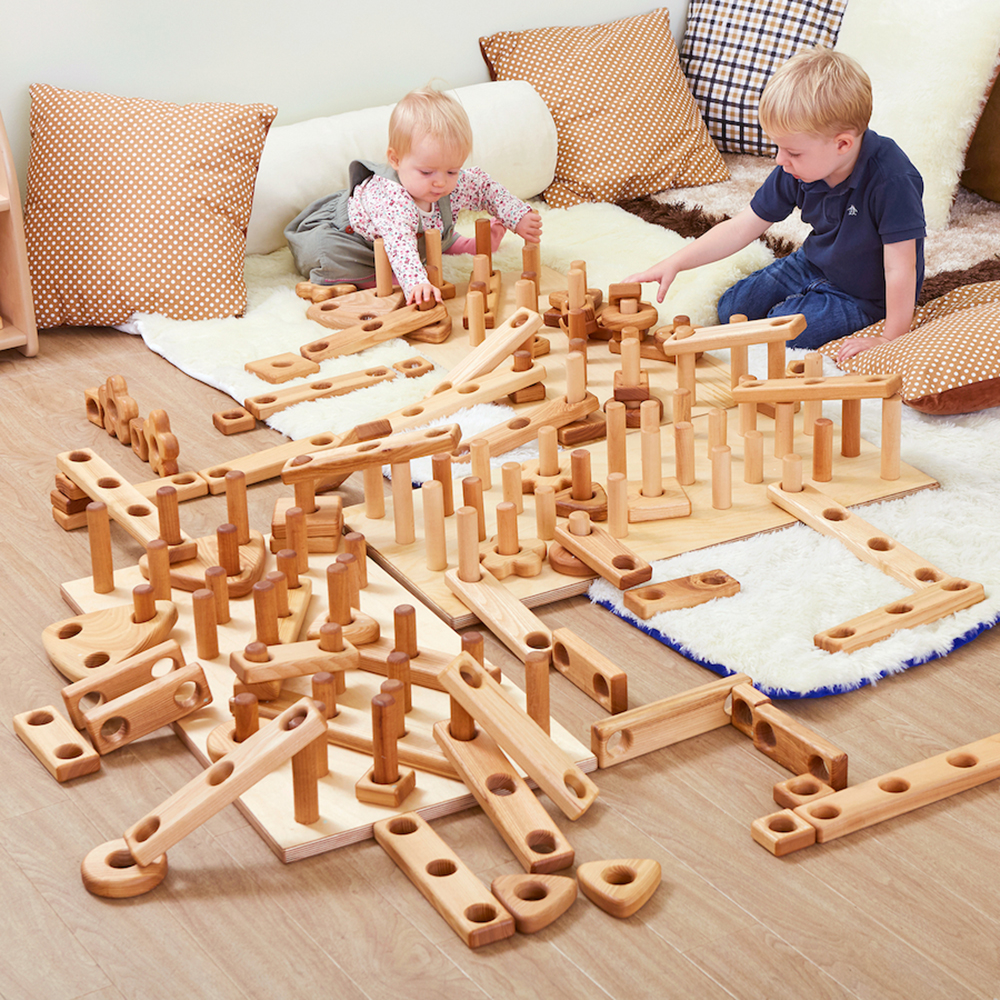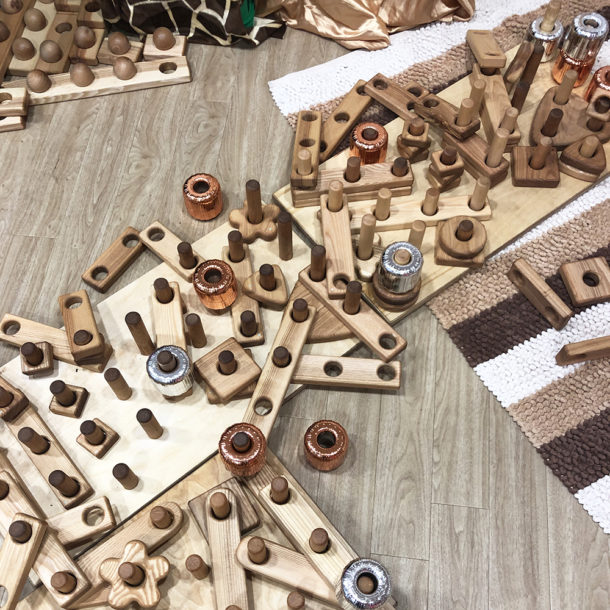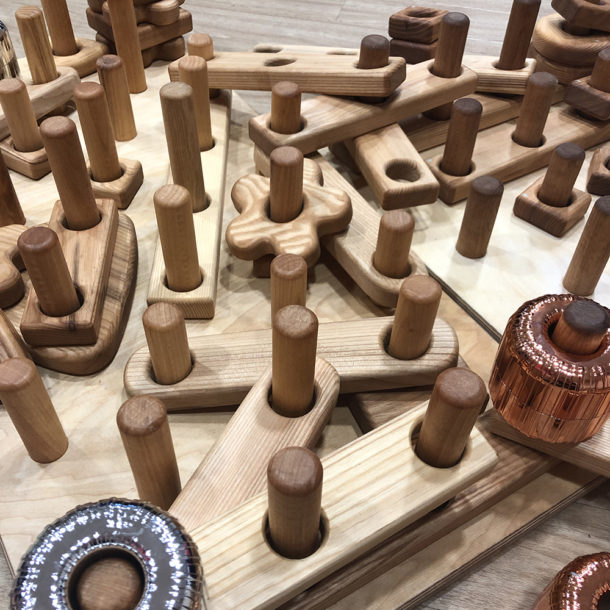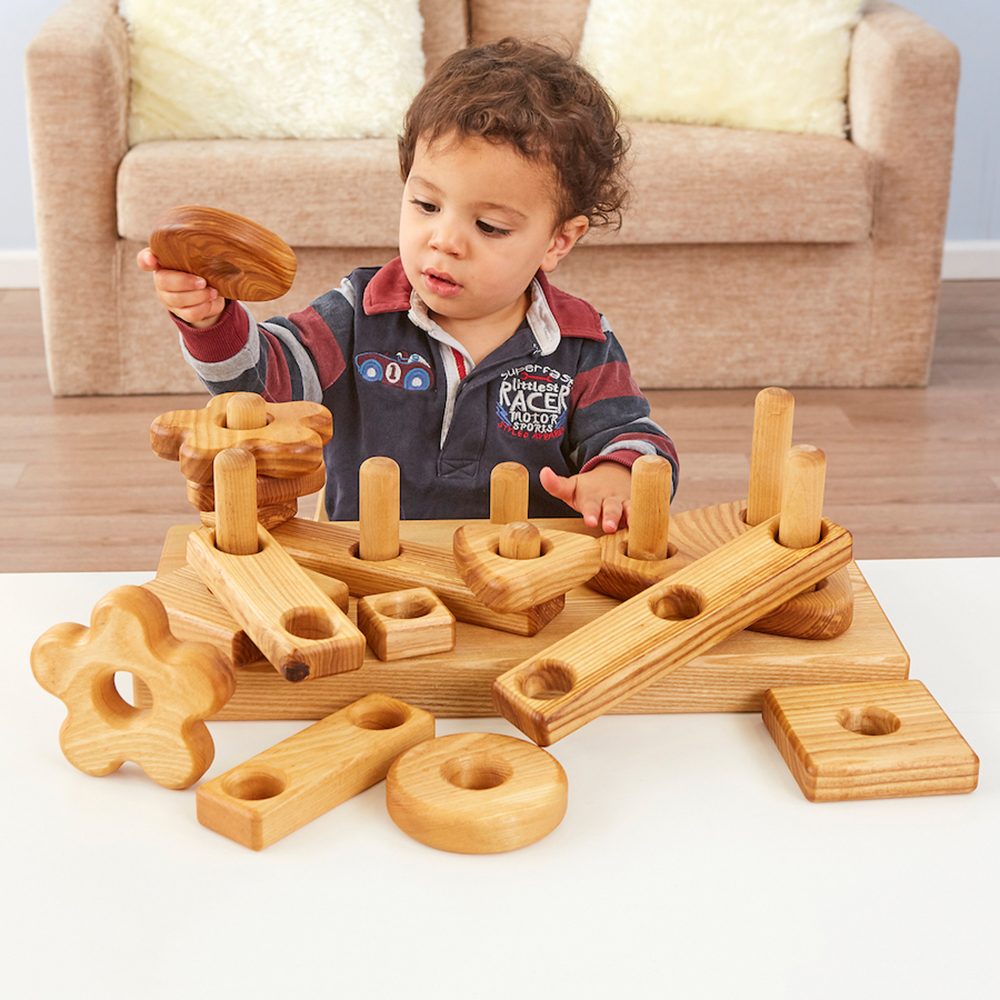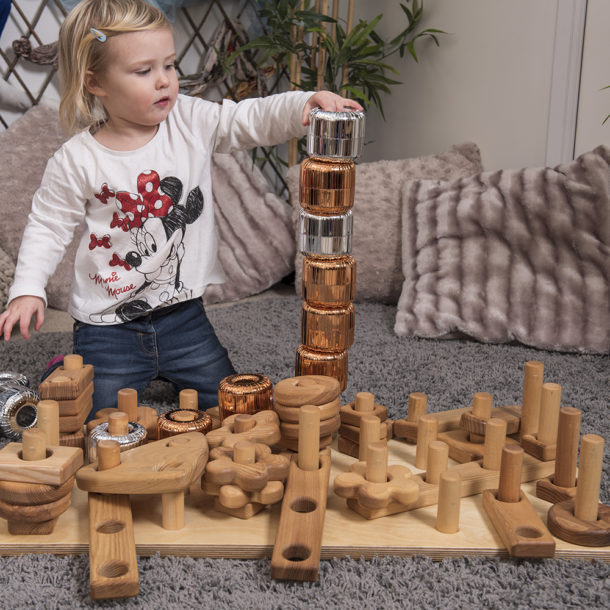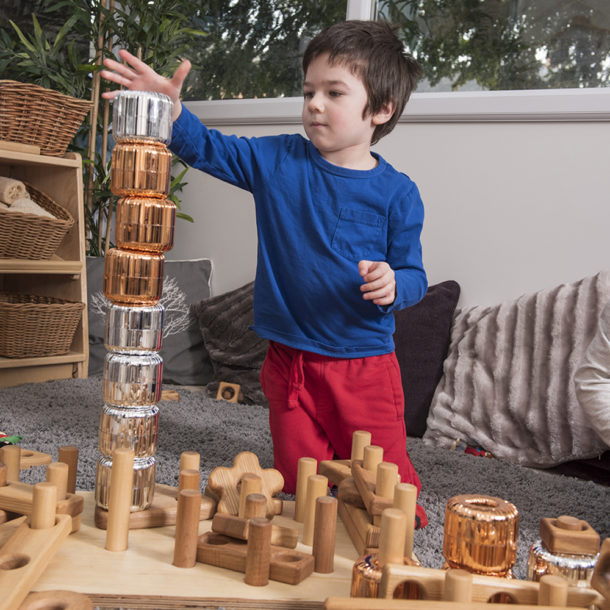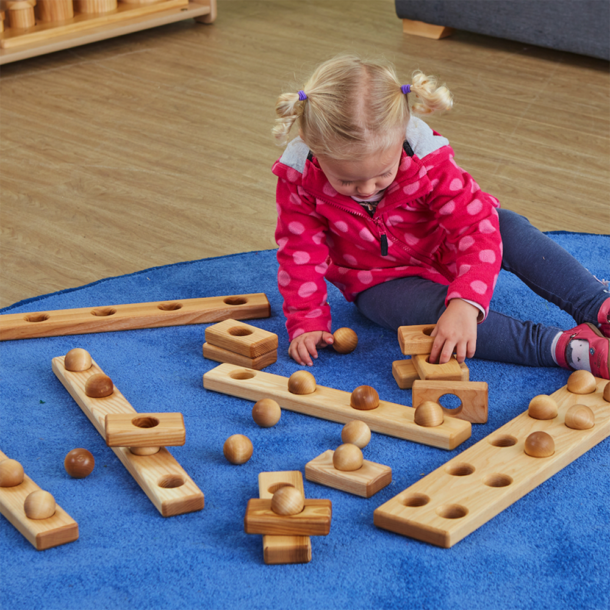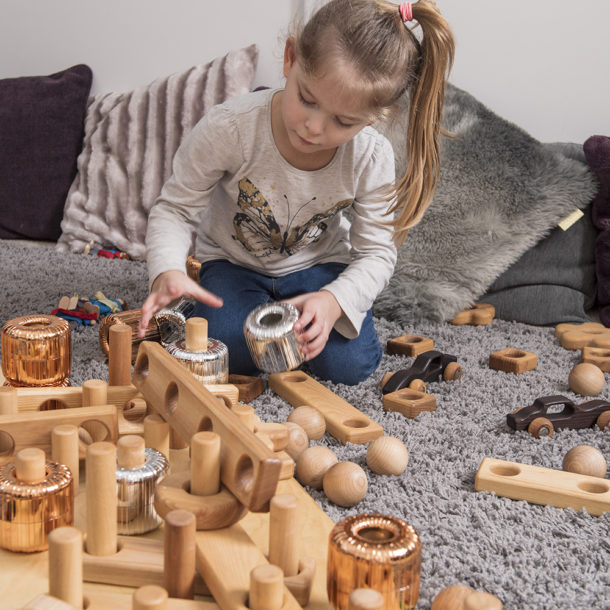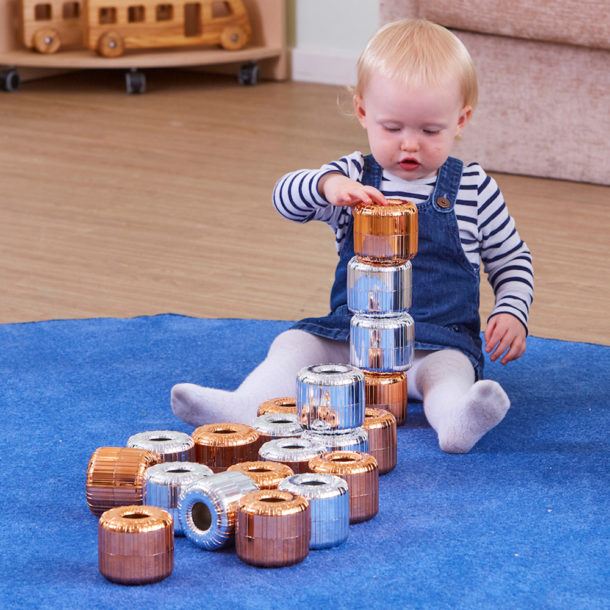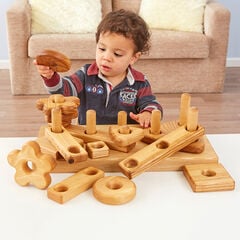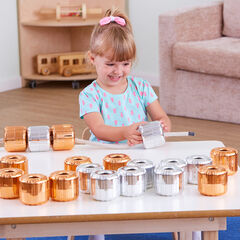Invigorate children’s construction with loose parts play
Let children’s imaginations soar as they build roadways, castles, small towns and mighty towers. The Giant Stack and Build Block is an open-ended resource which will certainly inspire children’s loose parts play and extend their construction experiences. Allow children to be their own architects and build all kinds of creative constructions, limited only by their imaginations!
The Giant Stack and Build Block can be used as part of children’s small world play to create miniature play spaces with homes for their own imaginative characters or ramps for vehicles as they position the shapes in various ways. This versatile resource will equally support individual schematic interests. Children will love manipulating the shapes and experimenting with ways in which these can be stacked, balanced and rotated.
Encourage children’s critical thinking
Ask questions such as ‘I wonder if we can make this tower taller?’, ‘Which piece is longer?’ and ‘What will happen if we place a smaller piece on the bottom?’
Extend learning:
You may wish to further support children’s critical thinking by modelling stacking the blocks, discs or shapes to see how tall a tower can be made. Allow children to make their own choices about how to approach this task, make predictions and test their ideas.
The busy blocks and balls set is ideal for loose parts play. Children can engage in construction by balancing and building in many different ways. As children handle the smooth wooden balls, fitting them into the holes, they will develop their hand-eye coordination and fine motor skills. Scaffold children’s mathematical learning by asking questions such as, ‘Can you find all of the balls to fit into this block?’ and ‘How many balls can you count?’ Older children can match quantity to the numeral and carry out some simple addition using the blocks and balls.
These giant metallic discs are versatile resources designed to align with children’s schematic interests. Toddlers will love experimenting through rolling, stacking, sequencing and threading them. The chunky textured design allows for small hands to grasp and manipulate the discs with control, thereby supporting children’s hand-eye coordination and fine motor skills.
The open-ended nature of the discs allows for them to be used in many different play experiences and learning contexts. For instance, children may choose to engage in construction by stacking and balancing them. Some children might incorporate the discs within their small world play by using them as magical towers or miniature homes. The treasure-like colours will certainly appeal to children’s shiny collections or perhaps a pirate’s hoard!
The metallic discs could be threaded on a chunky piece of string – perfect for counting – or sorted and ordered by colour.
Schemas
Children’s schemas will be supported as they stack, roll and order the blocks, spheres, shapes or discs depending on their own individual interests. Encourage children to make links by grouping the different pieces, as well as making their own sequences and patterns.
Discover our range of construction sets that will inspire, support and engage!
With thanks to Angelica Celinska for writing this blog. Angelica has 10 years of experience working in the Early Years and Primary sector with a Masters in Early Years Education from the Institute of Education, University College London (UCL).


